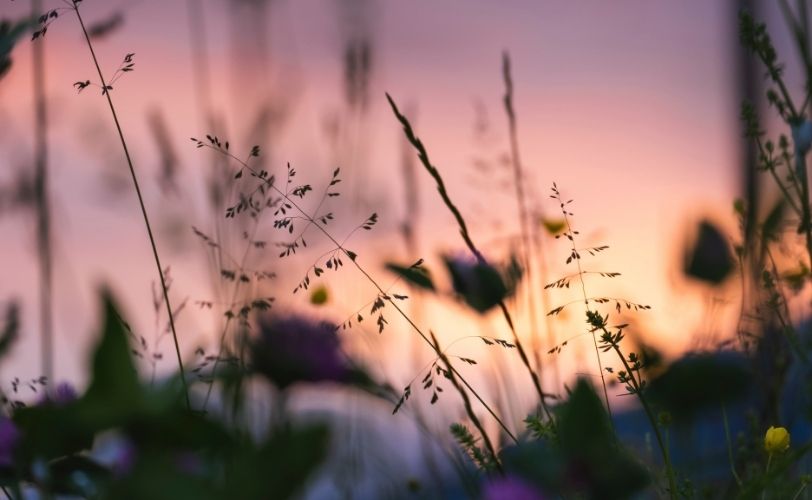How non-attachment can help us find peace right now
If I could pick two words to never use again after the COVID pandemic, it would be ‘unprecedented’ and ‘uncertainty’. I for one would love for things to become more precedented and certain in the future. This would ease my inner turmoil and anxiety which, like a lot of us, has been loud this year.

Rattling in my chest like a caged bird, this anxiety asks, when will this be over? Are we going to have another national lockdown? What will 2021 look like? And of course, I have nothing to offer it apart from distraction; I point its attention towards video games and movies until it tires itself out. This technique does the trick in the short-term, but let’s face it, it’s not sustainable. And we need something else because we don’t have answers to these questions – there’s no blueprint on how to cope with a global pandemic. So what do we do?
A possible answer revealed itself to me while reading an article about the Buddhist teachings of non-attachment. At first glance, it could be easy to think this notion is just about being unattached to physical possessions and living with less, but this is a common misconception.
What is non-attachment?
Let’s start by looking at what attachment means in this context. Being attached to something – an object, an idea, an experience – means pinning our hopes on it being around forever. This hope is sadly often dashed because nothing, really, is permanent. The Dalai Lama says, “attachment is the origin, the root of suffering; hence it is the cause of suffering,” because when we attach ourselves to something, we suffer when it goes away.
Everything breaks. Attachment is our unwillingness to face that reality.
– Zen master
This sounds quite extreme and a bit sad, but it reminds us that everything in this life is impermanent and that can be quite freeing.
Often we become attached to moments – past moments or even future moments. We compare our present with our past or potential future and this is a sure-fire way to rouse our anxiety. When we embrace this idea of impermanence and let go of our attachments, we can settle into the here and now. Or, if that feels too difficult, accept that it will inevitably change in the future.

How can we use non-attachment to cope better with uncertainty?
By now you’re probably connecting the dots to see how this can help with our current situation. What we’re going through is difficult, but among all the uncertainties what we do know is that nothing is permanent.
Leaning into the teachings of non-attachment can help us step back, unpick our attachment to the past (the way things were) and the possible future (the way things might be) and recognise that the only constant in this life is change. This situation will change.
We can still have hopes and goals, but when we hold them lightly, without attachment, they don’t own us. We become more adaptable when things inevitably change and if there’s anything this year has taught us, it’s that being adaptable is paramount.
Spiritual author, Ron W. Rathbun wrote, “True detachment isn’t a separation from life but the absolute freedom within your mind to explore living”. So think of it like an untethering of sorts. When you cut your ties you become free to explore. When we release ourselves from outcomes, we can find both freedom and peace of mind.
How to let go of your attachments
This idea of letting go sounds quite dreamy in theory, but how do we do it in practice? First of all, it’s important to acknowledge that making attachments to outcomes is human. We can’t beat ourselves up for it, instead we need to be gentle with ourselves and instill a sense of curiosity. What would happen if you thought about things a little differently?
Those who seek security in the exterior world chase it for a lifetime. By letting go of your attachment to the illusion of security, which is really an attachment to the known, you step into the field of all possibilities. This is where you will find true happiness, abundance, and fulfillment.
– Deepak Chopra
The aim of letting go of attachment is essential to find inner stillness and embrace uncertainty. Thankfully there are some tools we can use to help untether ourselves, including mindfulness, self-observation and meditation.
Mindfulness
Another teaching from Buddhism, mindfulness is all about becoming present to the here and now. The very act of being mindful encourages us to be unattached, open and accepting of whatever may come up in the moment.
A great deal of anxiety involves living in the past or the future. For me, it tends to involve ruminating on conversations I wish had gone differently or frantically trying to plan for a blurry-looking future. Mindfulness takes you by the hand, sits you down and asks you to do nothing but observe. The background hum of traffic quickly becomes mesmerising while you let thoughts come and go like clouds in the sky. The caged bird becomes quiet.
There are several different ways to practice mindfulness. You may want to start with mindful meditation, the Headspace app is a great option to learn the basics. Other ways to practice mindfulness include mindful movement (like yoga, Tai-Chi or Pilates), going for mindful walks or simply making a moment in your day more mindful but being fully present (try it when eating or drinking your morning coffee).

Self-observation
Letting go of our attachments requires us to first acknowledge our attachments. This means we need to get up close and personal with our own thoughts. We have so many thoughts running through our minds daily, it would be impossible to observe every one of them, but getting into a habit of noticing the flavour of our thoughts can help.
You may find it helpful to track your mood daily, noting any thoughts that have stood out (there are several apps out there that can help with that, including Daylio). Starting a journaling practice can also help, offering you some space to air your thoughts and get it all down on paper.
When you become the observer of your thoughts, you can recognise which ones trigger negative emotions and ask yourself how you can reframe them. For example, instead of thinking “I can’t see what the future holds, this is scary” try reframing it as “I can’t see what the future holds, this means anything is possible.”
Subtle shifts in your thinking sheds new light on the situation. It lets you see another perspective which can ease fear and inspire a sense of optimism.
Meditation
I know – being told to meditate during a global pandemic seems a little trite, but if you want to let go of your attachments, it’s a tool you can’t deny. Encouraging both mindfulness and self-observation, meditation is the one-stop-shop for everything discussed above. Whether you stick to mindfulness meditation or branch out to other types such as mantra meditation, movement meditation or transcendental meditation, they’ll all help you untether.
To get started you may find it helpful to try a simple breathing exercise. When we’re anxious our breath becomes shallow and sits in our chest. When we drive it down to our bellies, take it deeper and wider, we relax. It’s a superpower many of us forget about.
The 4-7-8 breathing technique is known to ease anxiety, improve sleep and even manage anger responses. Here’s how it works:
- Begin by emptying your lungs
- Inhale through your nose for four seconds
- Hold the breath for 7 seconds
- Exhale through pursed lips making a ‘whoosh’ sound for 8 seconds
- Repeat four times
Try it the next time you notice yourself straining against your attachments.
After reading this, perhaps you’re thinking there’s nothing particularly groundbreaking here. I know I already use some of the practices mentioned here including meditation, yoga and journaling – but with everything going on it’s easy for them to lose rank in my list of priorities.
So now I’m being more conscious in my approach and giving them a priority. I’m recognising my attached mindset when it creeps in and reaching for the tools I know will help me cut ties and, in time, release my caged bird.

Find a therapist dealing with Anxiety
All therapists are verified professionals





